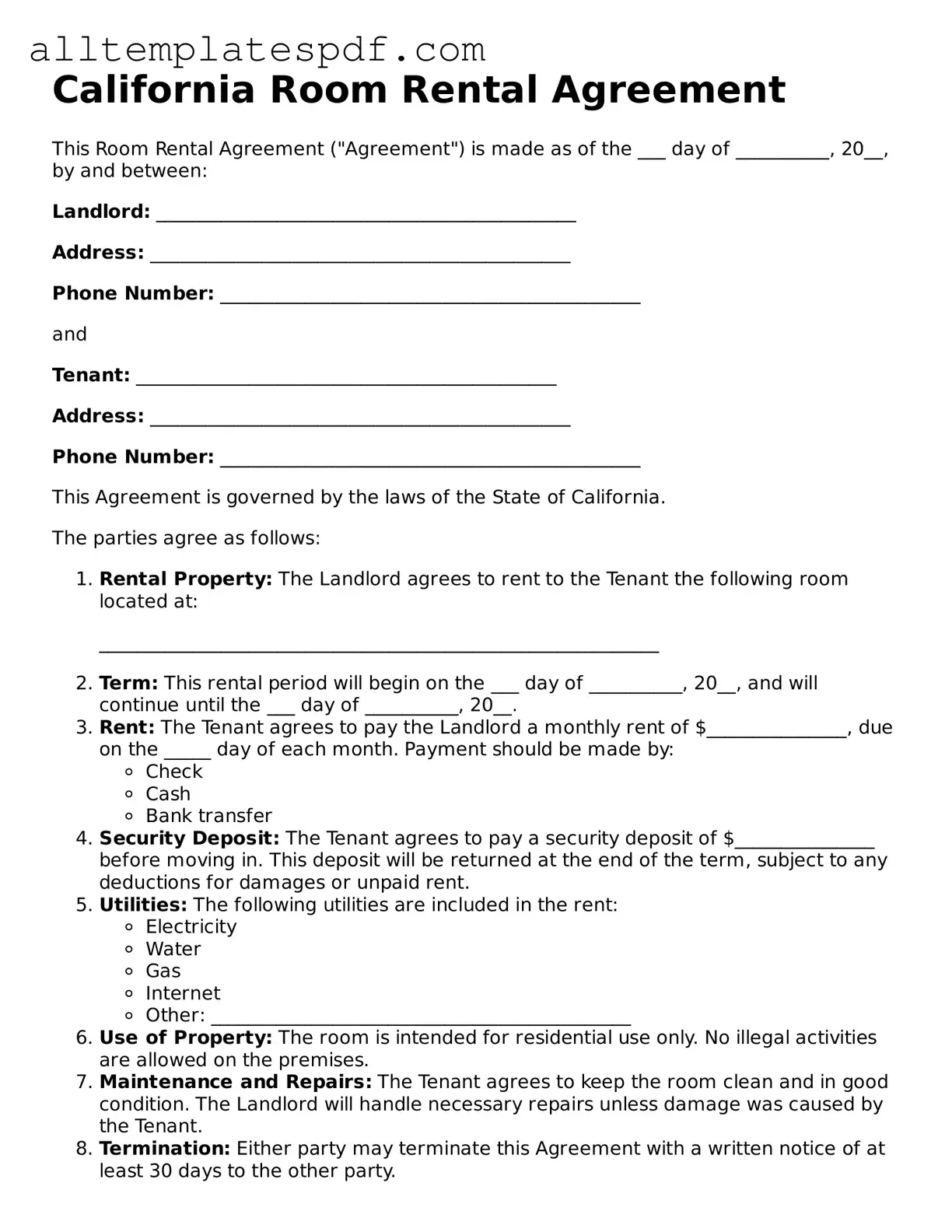When filling out the California Room Rental Agreement form, many individuals inadvertently make mistakes that can lead to misunderstandings or disputes later on. One common error is failing to provide accurate personal information. This includes names, addresses, and contact details. It’s crucial that all parties involved are correctly identified to avoid any confusion about who is responsible for the terms outlined in the agreement.
Another frequent mistake involves not specifying the rental term clearly. Whether the rental is for a month-to-month basis or a fixed term, this detail must be explicitly stated. Omitting this information can lead to complications regarding lease renewals or termination. Clarity in the duration of the rental agreement helps both landlords and tenants understand their rights and obligations.
Additionally, many people overlook the importance of detailing the rent amount and due dates. It is essential to include the exact monthly rent and specify when it is due. Vague terms can result in disputes over payment expectations. A clear agreement on the rent amount helps prevent financial misunderstandings and ensures that both parties are on the same page.
People also often forget to address security deposits properly. The California Room Rental Agreement should clearly state the amount of the security deposit, the conditions under which it may be withheld, and the timeline for its return after the tenancy ends. Not including this information can lead to frustration and disagreements when it comes time to settle accounts.
Another mistake is neglecting to outline the responsibilities for utilities and maintenance. It is vital to specify who is responsible for paying utilities such as water, gas, and electricity, as well as who will handle maintenance issues. Without these details, tenants may assume that the landlord will cover all expenses, leading to potential conflicts.
Lastly, many individuals fail to include any provisions for terminating the agreement. Whether it’s a notice period or conditions under which either party can terminate the agreement, this section is crucial. A lack of clear termination terms can leave both landlords and tenants vulnerable to unexpected situations, making it important to address this aspect thoroughly.
